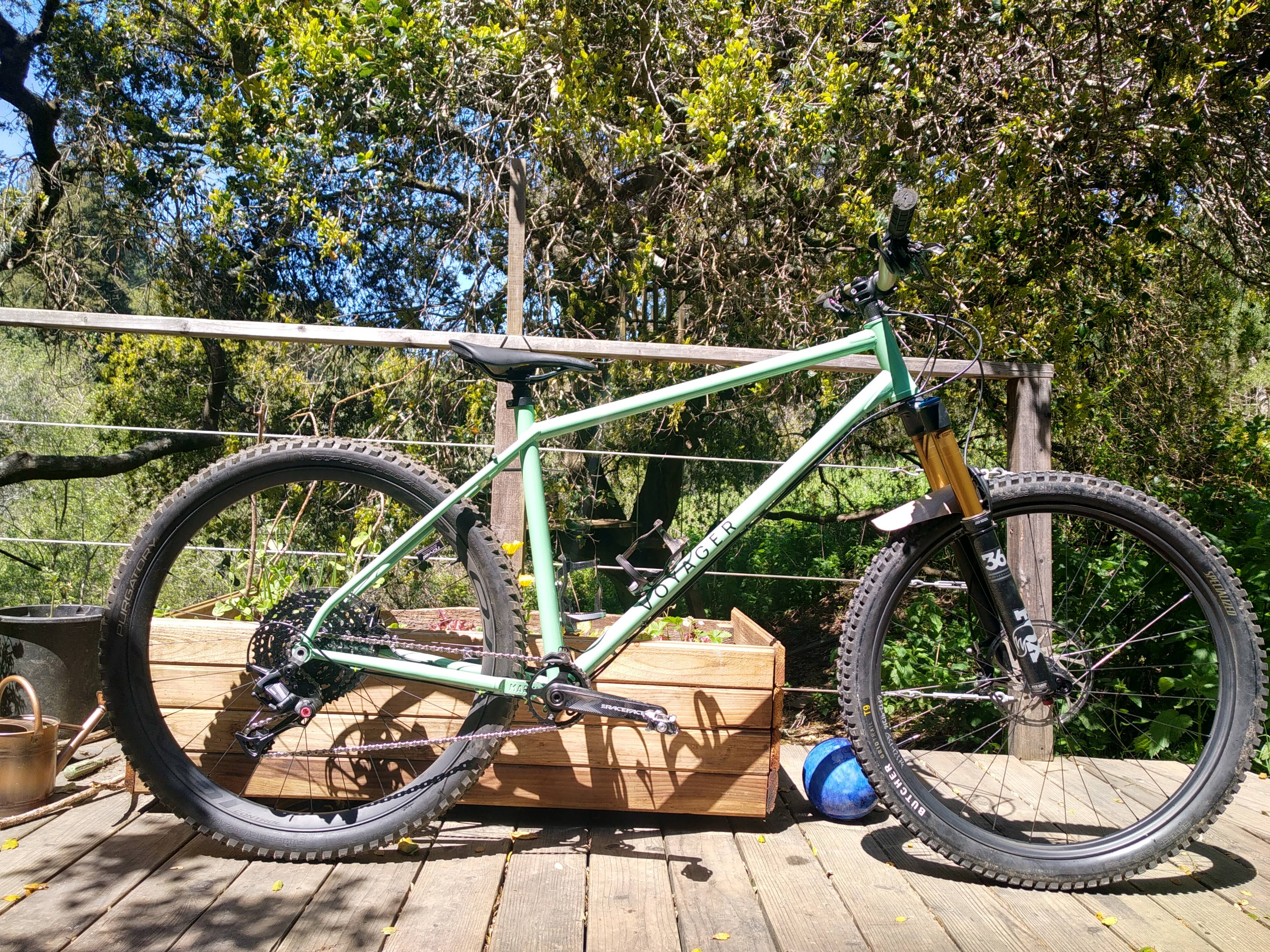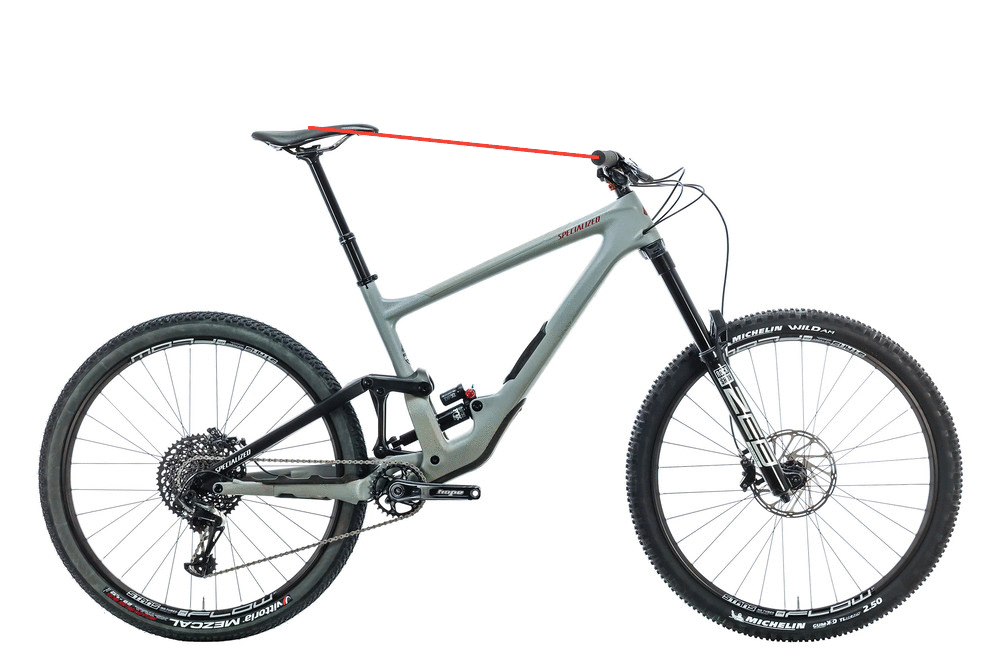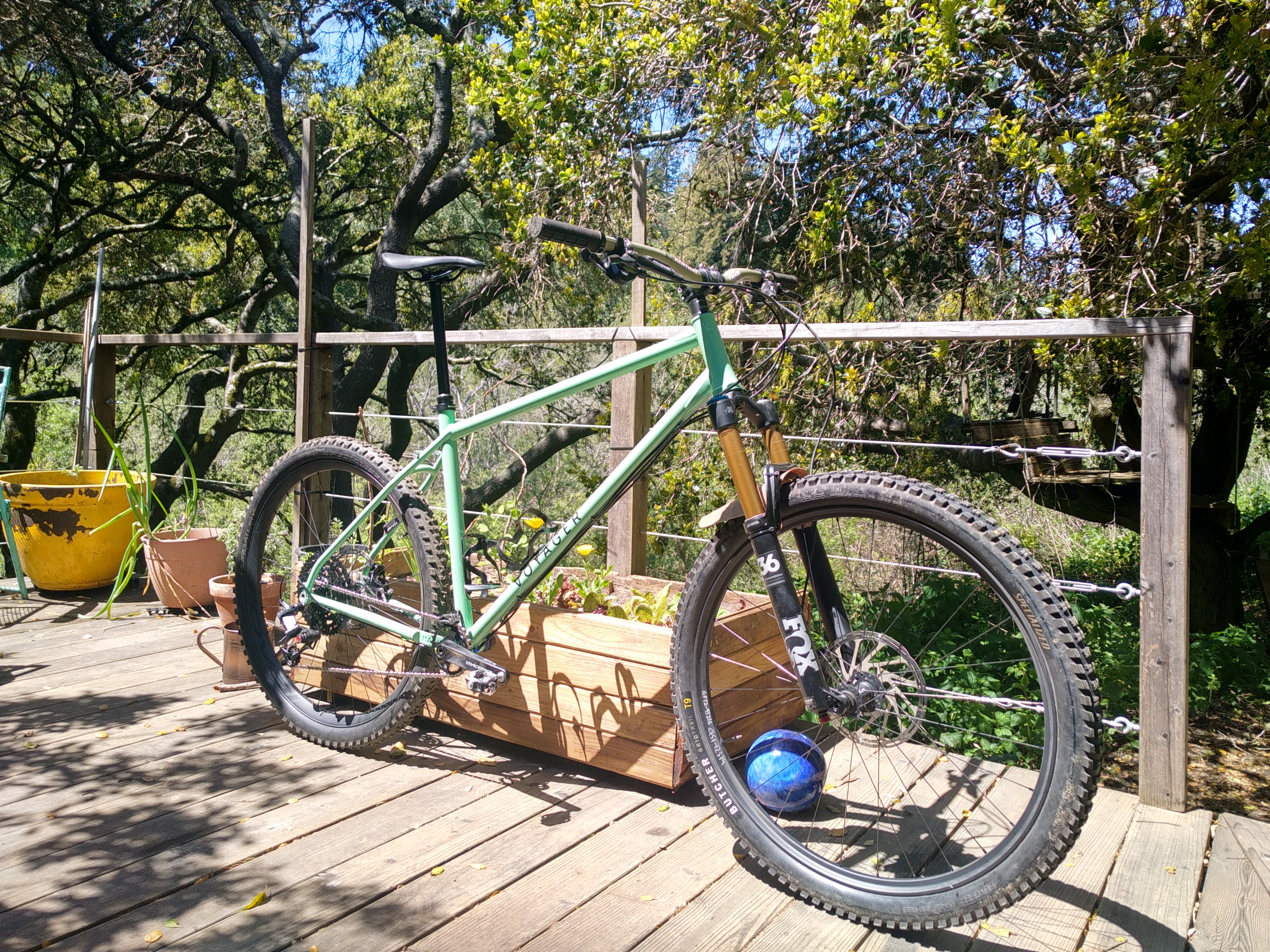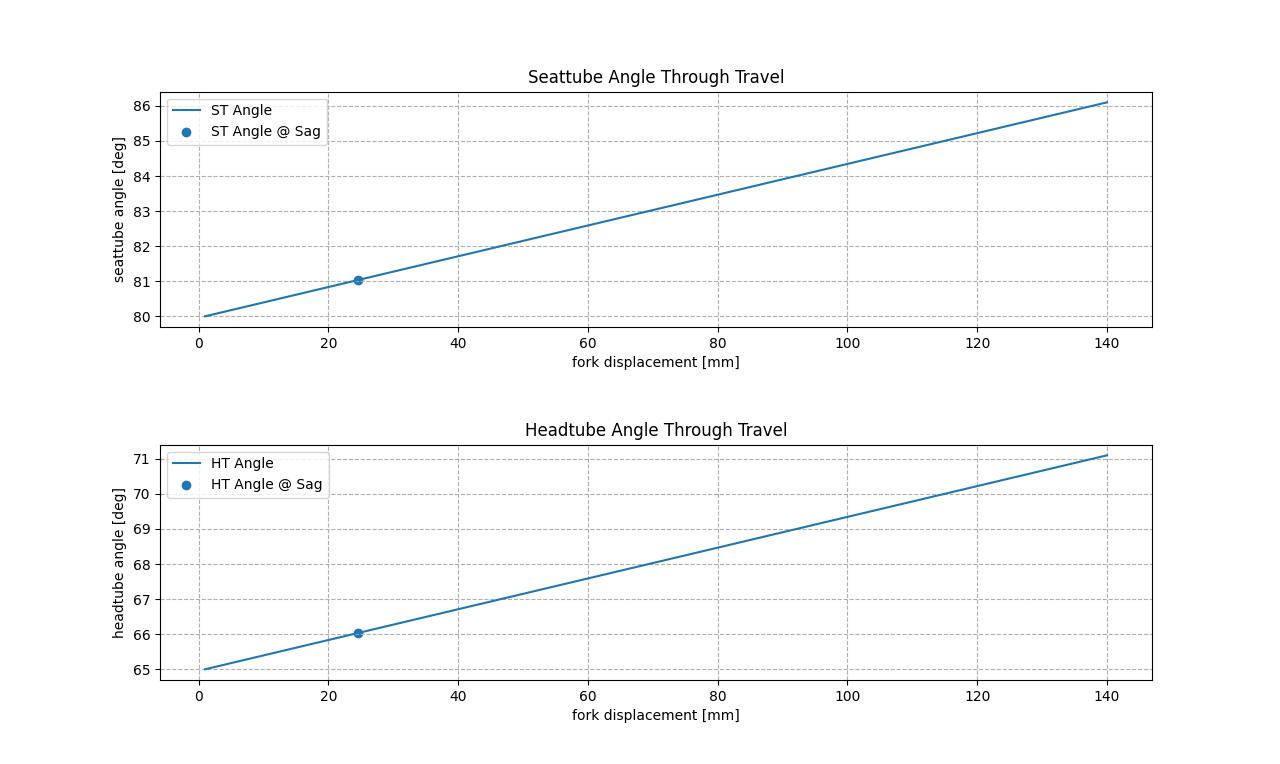Voyager Hardtail
A mountain bike for tall guys
My buddy Aaron and I were bored and probably drunk one night at his house in the mountains. We wanted hardtails. We wanted to design these hardtails. And so we decided to do just that. The next two months we spent an hour or two a day armchair engineering our way to the the “perfect” hardtail. We ended up with two very different bikes because he is short and I am tall. But some of the characteristics were similar.

We both wanted good bike packing rigs, so the geometry needed to be comfortable. For me, this ended up meaning a very large stack height. Most extra large frames are not purpose built for tall people, they are just normal sizes stretched out a bit. This means most tall riders are hunched over their bars since their saddle is so much higher than their cockpit. So I wanted my saddle and cockpit to be on a roughly horizontal line with respect to each other. This allows me to be more upright while pedaling, taking load off my triceps, and keeping my back straighter.


We also wanted out bikes to shred. So we made the wheelbases very long (mine is as long as my S5 Stumpjumper Evo!), and our head tube angles relatively slack. I have a generously spec’ed 140mm fork on my bike to make it fairly capable. Worried that pushing through the travel would steepen my head tube and seatube angles too much for comfort, I whipped up a quick Python script to make sure this wouldn’t be too extreme, some plots are below with the results. You can see that as we go through travel, we do steepen both angles a non-negligible amount, but in terms of descending, nowhere beyond reasonable ranges for a hardtail. I marked the sag points on both plots.

Yes, I have a steep seattube angle. Innovation! Ha! The bikes hopefully would also “shred” uphill. Thus, our steep angle of choice. The steeper the trail gets on the climb, the more in control you feel since your center of mass is relatively far forward. This also keeps the reach short, allowing for a more upright, comfortable posture.
Overall, the bikes are sick. If you don’t want to take our word for it, here is the engineering drawing I made for manufacturing—go make your own and see for yourself!
